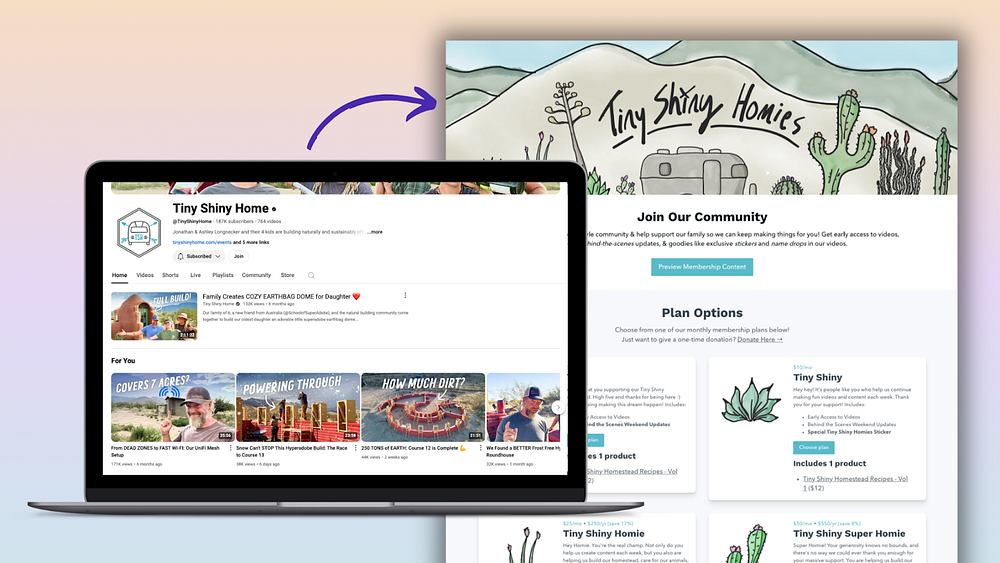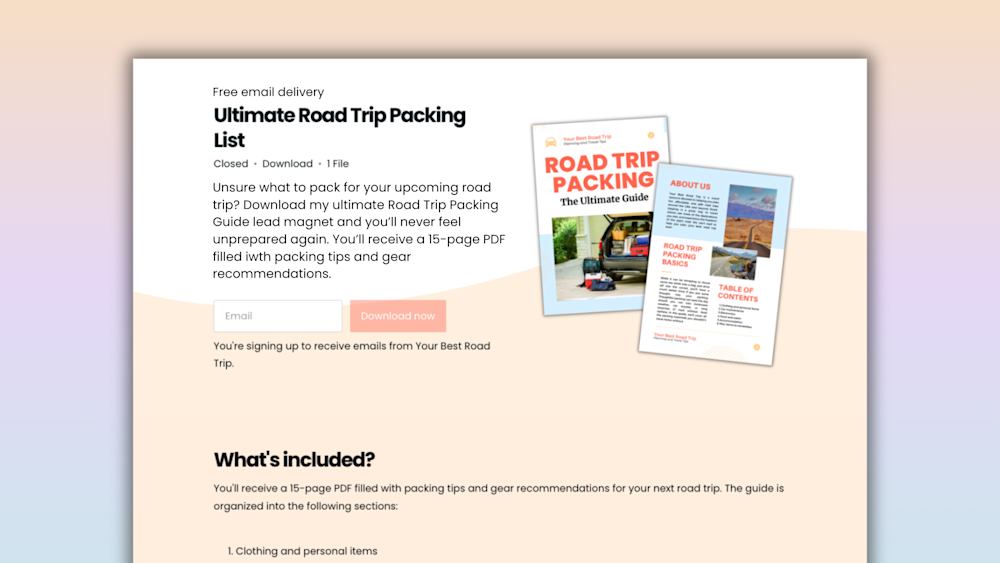You created a digital product that you know your audience will love. It’s full of actionable guidance and expertise, and it has the potential to make a real difference in your customers’ lives.
So why isn’t it flying off the (virtual) shelves?
Your marketing strategy could be the culprit — especially if you don’t have a plan to get your customers from point A (discovering your product) to point B (thinking about buying it) to point C (becoming loyal and delighted customers).
That’s where marketing funnels come in.
Whether you’re new to selling digital products or want to overhaul your current marketing strategy, a marketing funnel might be the secret weapon you need to turn more leads into customers.
In this article, we’ll explain why marketing funnels are a must-have for creators. Then, we’ll share the best marketing tactics to use at each stage of the funnel.
But first, let’s take a step back and answer the question on everyone’s minds: What exactly is a marketing funnel?
What is a marketing funnel?
A marketing funnel maps the journey that a potential customer (or “lead”) takes from their first interaction with your business until they make a purchase.
Where a lead is in the funnel depends on how familiar they are with your brand or product and how close they are to making a purchase decision.
Different marketers break their marketing funnels into different stages. We’re going to keep it simple with a three-stage funnel mapping the buyer’s journey from awareness to decision.
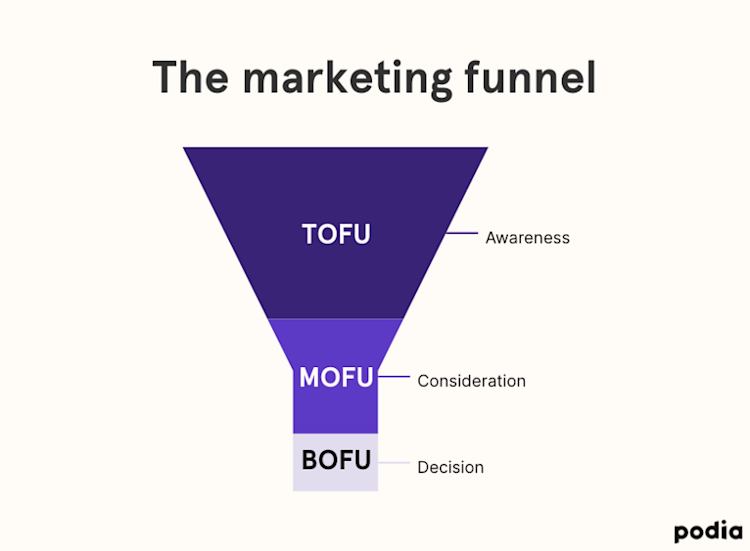
-
Awareness: They’re just starting to discover your brand or product. These leads know they have a pain point, but don’t know what solutions are available.
-
Consideration: These leads are evaluating different solutions. They’re trying to figure out if your product will solve their problem and if they can trust your brand.
-
Decision: These leads are ready to buy — they just need an extra push to become customers.
You’ll also often see the stages of the marketing funnel broken down into TOFU, MOFU, and BOFU, meaning top of funnel, middle of funnel, and bottom of funnel. The further down the funnel a lead is, the closer they are to converting.
Now that you know what a funnel is, what makes it a marketing must-have?
Why do you need a marketing funnel?
Using a marketing funnel can help you make your marketing more effective and efficient.
Here’s what I mean: As a creator, your time is one of your most valuable assets.
The majority of small businesses spend fewer than five hours per week on marketing. When you have limited time and resources to spend on marketing your online business, you can’t afford to guess what content will resonate with your audience.
A marketing funnel takes a lot of the guesswork out of your online course marketing strategies. When you know where leads are in the customer journey, you can show them the content and messaging that meets their current needs.
That way, you don’t end up pitching a hard sell to someone who barely recognizes your brand.
Brian Clark, digital marketing expert and founder of Copyblogger, explains:
“We don’t dive into directly selling to every audience member who engages with our content. Instead, we use a variety of strategies — both direct and indirect — to make a case for the offer when the time is right.”
Plus, customers expect relevant content:
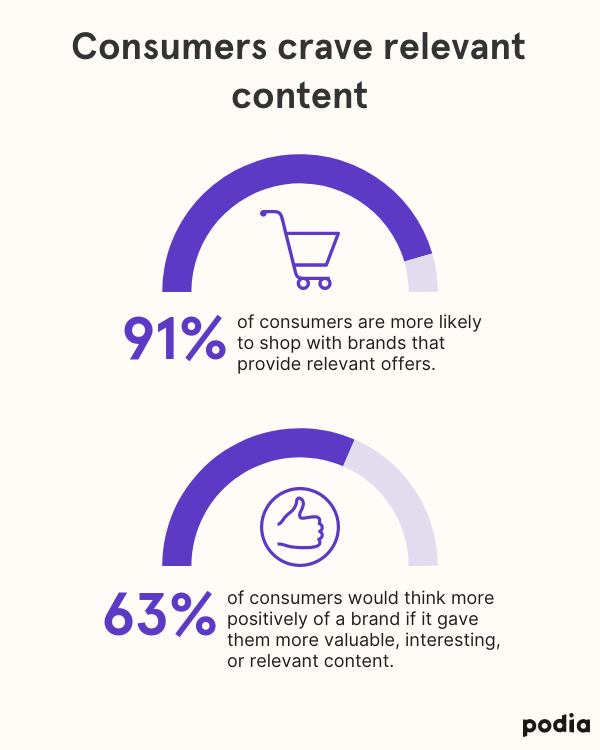
-
91% of consumers are more likely to shop with brands that provide relevant offers.
-
63% of consumers would think more positively of a brand if it gave them more valuable, interesting, or relevant content.
When you show your leads the right messaging at the right time, it pays off: Targeting users with content relevant to where they are in the buying process can lead to 72% higher conversion rates.
Ready to turn more cold leads into paying customers? Let’s dive into the best marketing tactics for each stage of the funnel.
How to market your digital products at each stage of the funnel
Awareness: Draw leads in with lead magnets and social media ads
In the awareness stage, people aren’t ready to even think about making a purchase. They’re still looking to learn more about their pain points and what solutions might be out there for them.
Give these leads the information they’re looking for by sharing high-quality content that addresses their pain points. This valuable content helps introduce your brand and establish you as an expert in your niche.
Enter lead magnets. A lead magnet is a resource — usually in the form of a free digital download — that leads receive in exchange for subscribing to your email list.
Even though you’re giving away free content, you need to offer lead magnets that your audience will be willing to hand over their email address for. People want actionable, informative content, such as whitepapers and ebooks, in exchange for their contact information.
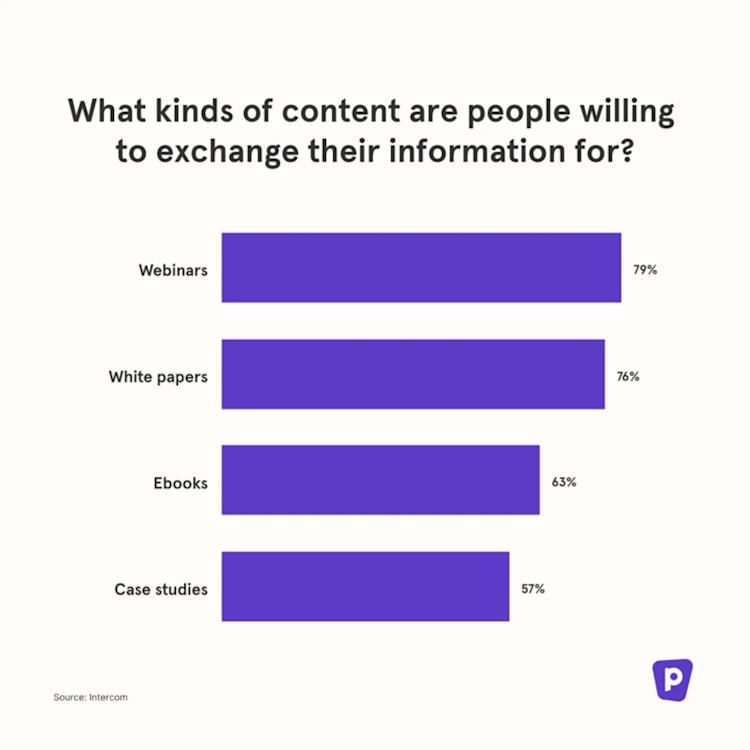
To bring in the most qualified leads, create a lead magnet that addresses your audience’s specific needs.
Take Ryan of Signature Edits, for example. Signature Edits offers presets, templates, and training for their target audience of photographers.
Ryan knows that different photographers run into different pain points, so he offers two lead magnets: a candid posing guide and a free sample pack of photo editing presets.
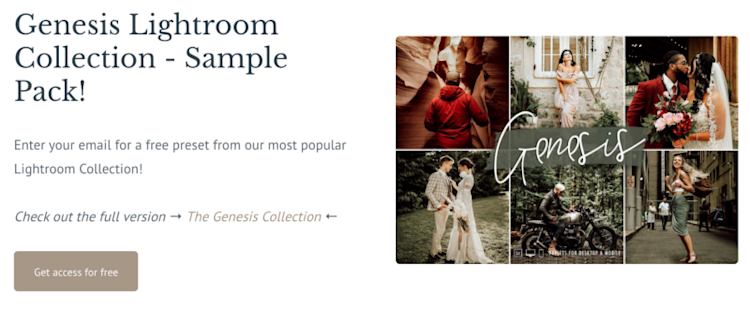
After someone downloads one of the lead magnets, Ryan sends them follow-up emails to tell them more about his brand and products. And offering two different lead magnets helps Ryan make those follow-ups more targeted and relevant.
For example, if someone signs up for the photo editing presets, Ryan knows that editing is a point of interest — or even a pain point — for that person. With that info on hand, Ryan can confidently promote his editing products to that lead.
You can tailor your marketing messaging even further with interactive content.
Creator Minessa Konecky of Direct to Success uses interactive quizzes to bring new leads into her marketing funnel and offer them a personalized customer journey.
“Quizzes are an amazing way to convert people,” Minessa told us. “You get to know so much about an individual person, or even about your people, and the trends that exist within your audience.”
Using quiz tool Interact, Minessa created a lead generation quiz for finding your business blocker to bring in and learn more about new leads.
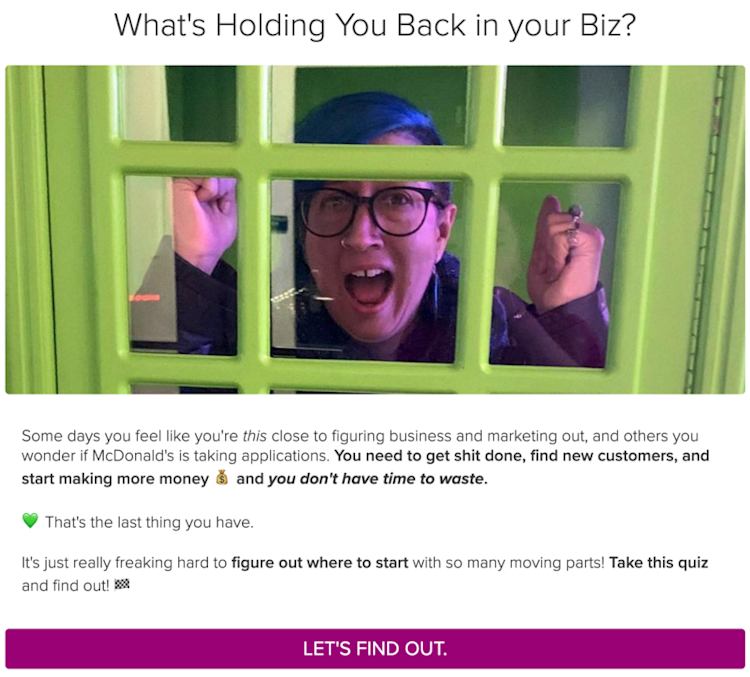
After someone takes her quiz, Minessa segments them into one of three groups:
-
Overwhelmed: Small business owners with too much to do and who aren’t sure how to spend their time each day.
-
Professional midlife: Entrepreneurs who have learned what they need to know, but haven’t figured out how to connect the action items into a strategy.
-
Perpetual procrastinators: People who know what they need to do, but can’t get started on their own.
Based on the group each lead falls into, Minessa moves them through the funnel by sharing one of three free mini-courses.
Then, once they near the bottom of the funnel, she introduces leads to her two main products and encourages them to purchase one of her products or join her membership, The Squad Academy.
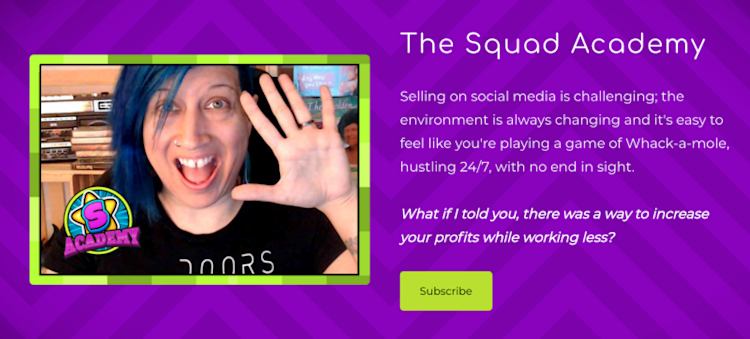
One more thing before we move on to the middle of the funnel: How do you get these lead magnets in front of your target customers?
Social media ads are an effective way to promote your lead magnets — especially on Facebook.
Here’s why: Facebook ads generally have a lower cost and higher ROI than other channels, making it one of the best social media platforms for small businesses.
Plus, Facebook has some of the most specific audience targeting features out there. For example, Lookalike Audiences help you target people similar to your current customers.
You take one of your existing audiences, like your blog subscribers or online course students, and tell Facebook to find more people similar to that audience.
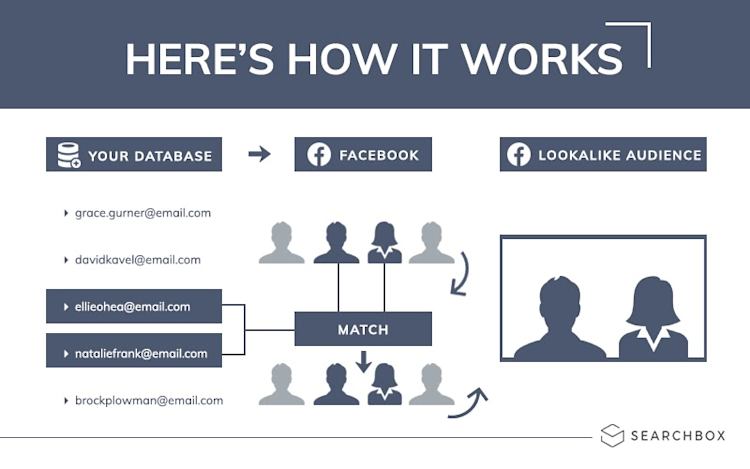
To learn more about how Facebook ads can help you fill your marketing funnel, check out these resources:
-
A guide to Facebook ads for digital creators, including a step-by-step tutorial on creating Facebook ads.
-
How to use the Facebook sales funnel to run marketing campaigns that turn leads into loyal customers.
-
Tips from social media marketing expert Mojca Zove on using Facebook ads to sell online courses.
OK, with the top of the funnel covered, you’re ready for the next stage: consideration.
Consideration: Nurture leads with email marketing
In the consideration stage, prospective customers are researching and comparing a handful of products. They know what their problem is, and they know there are multiple options out there to solve it.
Your job is to make them realize that your product is the best option. It’s time to nurture those leads.
I truly cannot overstate how essential lead nurture is. In a world where 80% of new leads never translate into sales, nurturing your leads can mean the difference between skyrocketing revenue and dismal sales numbers.
Still not convinced? On average, nurtured leads make 47% larger purchases and produce a 20% increase in sales opportunities than non-nurtured leads.
This is where email marketing comes into play. Email marketing is by far the most effective channel for lead nurture campaigns.
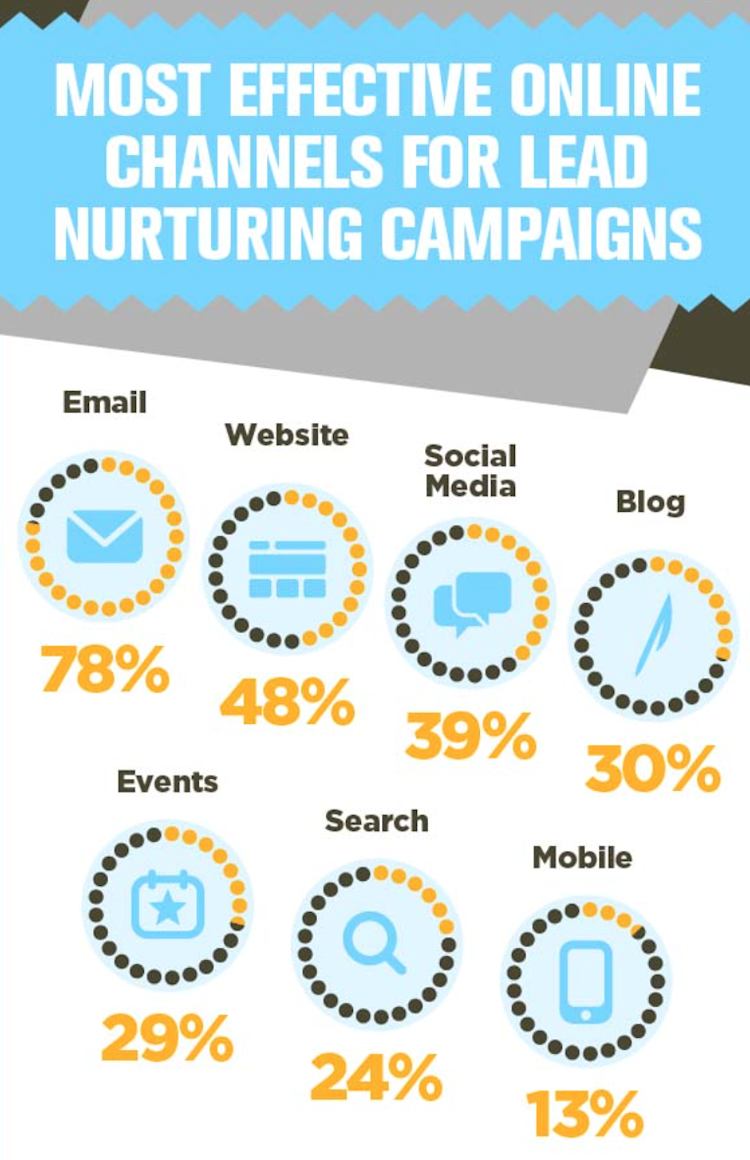
And with an ROI of $42 for every $1 spent, email is one of the most affordable and scalable marketing tools available — especially if you’re a small business owner with the budget to match.
So, now that your leads have subscribed to your email list, you’re ready to enter them into a nurture sequence.
A nurture sequence is a series of emails that moves your leads through the marketing funnel until they convert into customers.
Your email sequence doesn’t have to be complicated to work.
-
Email 1: Introduce yourself and get your subscribers to start thinking about the problem you’re going to solve for them.
-
Email 2: Now that your prospect is thinking about the problem, share some valuable insights with them to help them take the first steps toward solving it.
-
Email 3: It’s time to introduce your course. Outline what your course offers and why it could be a great solution for them.
-
Email 4: You’ve made your first pitch, but your potential customer might still have some reservations. Answer some of the key questions they might have about your course.
-
Email 5: Make one final pitch. Show them why they should act now and invite them to reach out to you with any questions.
Each email serves a specific purpose. Once we get into emails four and five, the lead is in the decision stage, and the hard sell doesn’t happen until the fifth and final email. You want to gently guide your lead toward converting — not shove them into the deep end.
(For more email tips, check out this guide to writing high-converting sales emails.)
The middle of the funnel is also an excellent time to share social proof with your leads.
Coined by Dr. Robert Cialdini in his famous book Influence, the idea behind social proof is that “we view a behavior as more correct in a given situation to the degree that we see others performing it”.
In other words, when leads see that people like them are buying and seeing results from your product, they’ll want to get in on the action.
For marketers, leveraging social proof means including customer reviews and testimonials throughout the marketing funnel, but especially during the consideration phase. Here’s why:
-
92% of consumers read testimonials and online reviews when they’re considering a purchase.
-
88% of consumers trust online reviews as much as personal recommendations.
-
72% of consumers say that positive testimonials and reviews make them trust a business more.
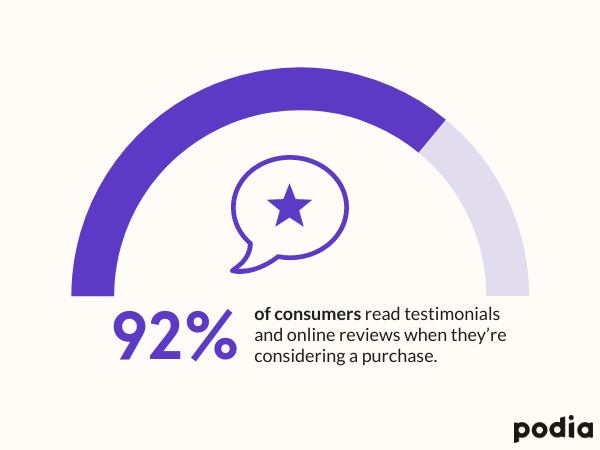
To incorporate customer feedback into your nurture sequence, share a link to a case study or the testimonials page on your website. If you don’t have any customer testimonials to share, this guide on how to ask for customer testimonials can help you get started.
Alright, you made it through the consideration stage, and the sale is so close you can taste it. Let’s cross that finish line.
Decision: Convert leads with retargeting and special offers
The decision stage is the final stretch of your marketing funnel. At this point, your marketing should make converting a no-brainer for your audience.
But how do you get them over the finish line?
One of the most powerful BOFU marketing tools is retargeting.
Have you ever been looking at a pair of shoes on an ecommerce site, then clicked over to Facebook, just to see those same shoes advertised on your newsfeed? That’s retargeting.
That specific type of retargeting works via the Facebook Pixel, “a piece of code for your website that lets you measure, optimize and build audiences for your ad campaigns”. It helps you retarget BOFU leads who have visited your website and engaged with your content.
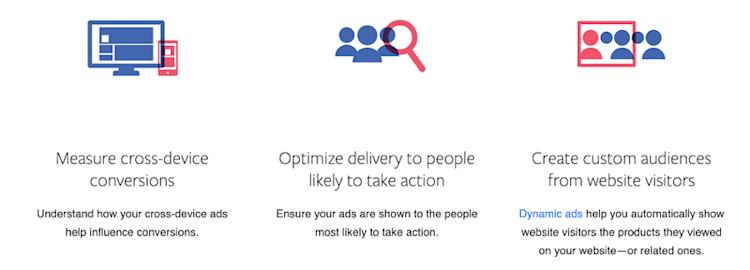
Here’s how the Facebook Pixel works:
-
You add the pixel to your website code.
-
The pixel tracks which products visitors are interested in.
-
You use the pixel to target and remarket to those visitors via Facebook ads.
-
Visitors click the ads, come back to your landing page, and complete their purchase.
As far as the content for those retargeting ads, the decision stage is the time to ramp up urgency and highlight any special offers.
Obé Fitness did the latter by serving this retargeted ad on my Facebook feed:
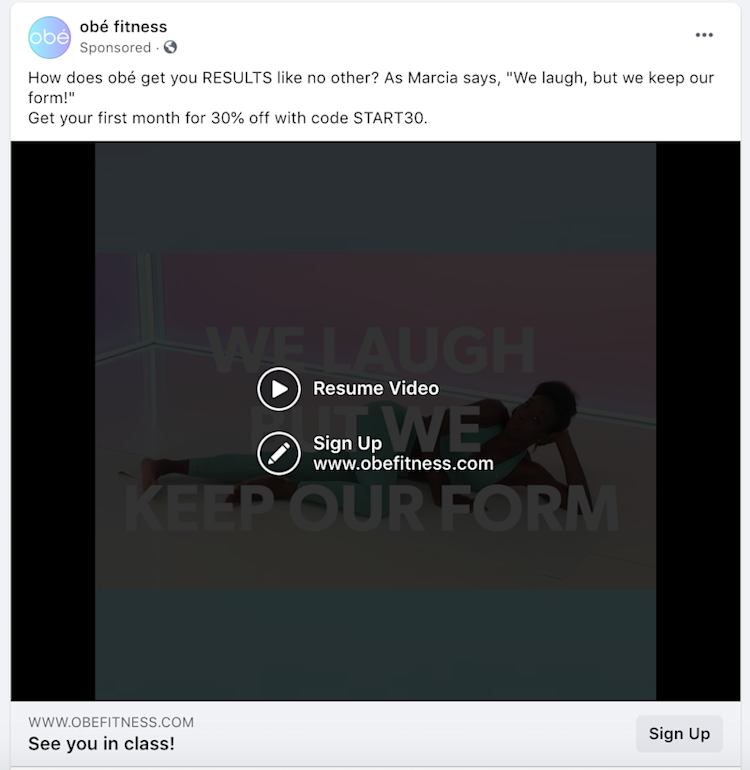
I’ve visited Obé Fitness’ site before, and even started filling out their signup form. Knowing I was close to converting, they retargeted me with a special discount code and a CTA to sign up.
In terms of adding urgency, a limited-time offer can make customers more likely to buy — and buy now. 89% of Americans say that an exclusive offer would make them likely to shop with a brand, while 48% say an exclusive offer would make them purchase sooner.
Here are some ways to incorporate that urgency into your BOFU marketing:
-
Create a deal that lasts for a limited time, then add a countdown timer on your product page. It might even lead to a 147% increase in conversions.
-
Use urgency in your email subject lines at the end of your nurture sequence. Subject lines that convey urgency have as much as a 22% higher open rate than those that don’t.
All in all, if you’re offering a limited-time sale, make that clear to the leads at the bottom of your funnel. It might just be the push they need to finally complete their purchase.
One last thing before we wrap up: After you convert new customers, don’t forget about them, or you might run into the dreaded customer churn.
You need to prioritize customer retention, not just acquisition.

-
It can cost up to seven times more to acquire a new customer than to retain an existing one.
-
52% of customers go out of their way to buy from brands they’re loyal to.
-
Repeat customers are nine times more likely to convert than a first-time shopper.
In fact, many marketers think of retention and advocacy as the fourth stage of the marketing funnel. Your customers have a stellar experience, they spread the word about your brand or product, those referrals enter your marketing funnel, and the cycle continues.
Add a funnel to your marketing toolbox
Every business, product, and audience is different. There’s no one-size-fits-all marketing hack that will magically make your conversions spike and your funnel overflow overnight.
But when you keep the marketing funnel top of mind, you can better understand the customer journey from awareness through purchase. And when you understand that, you can get the right messaging in front of your leads at the right time.
To recap, here are the top marketing tactics for each stage of the marketing funnel:
-
Awareness: Focus on providing high-quality content that addresses your audience’s pain points and establishes you as an expert in your space. Lead magnets and Facebook ads work wonders at this stage.
-
Consideration: Nurture your leads with an email sequence and social proof. Help them feel confident that your product meets their needs.
-
Decision: Go for the hard sell. Use retargeting, special discounts, and a sense of urgency to push your leads across the finish line.
Here’s the bottom line: Keep the customer journey in mind every step of the way, and you’ll be well on your way to building a marketing funnel that makes your sales numbers soar.
